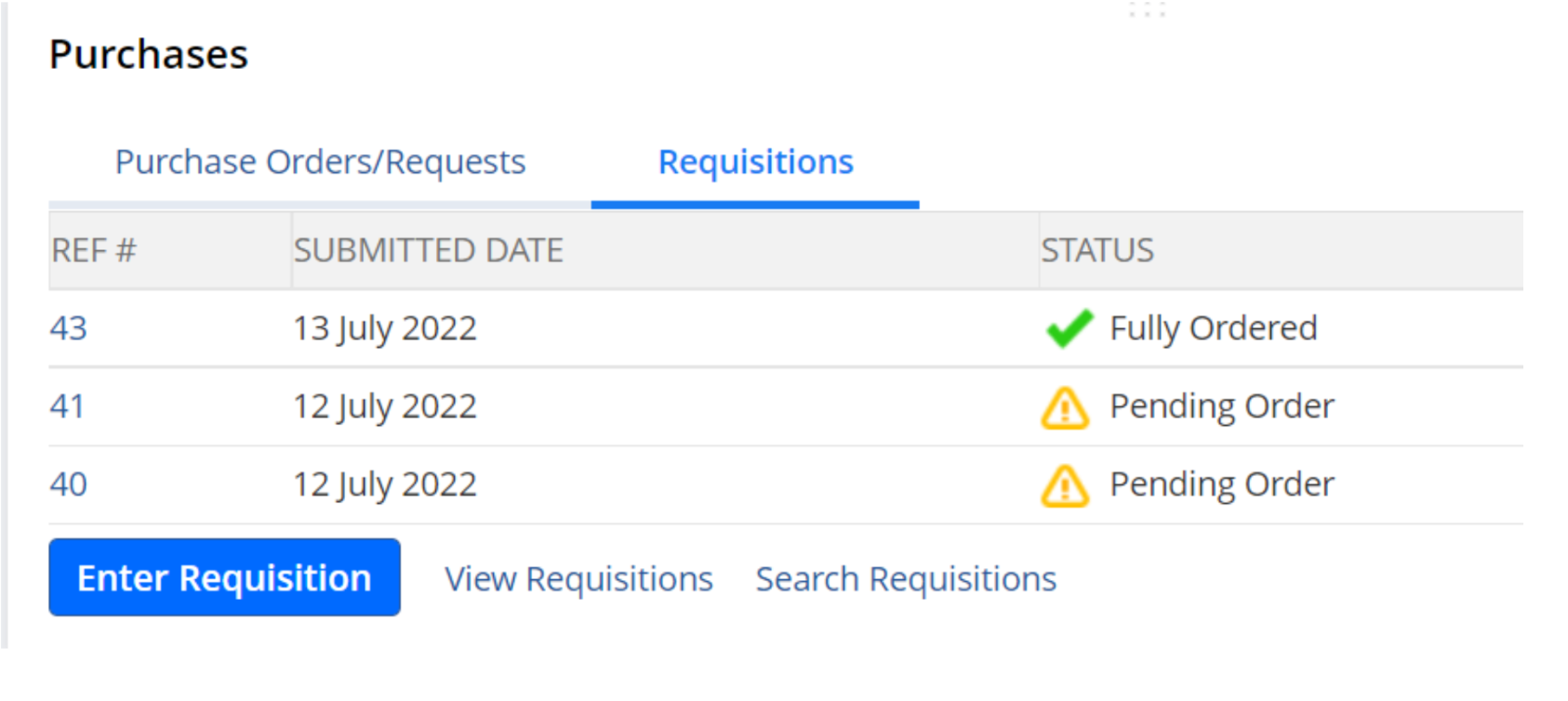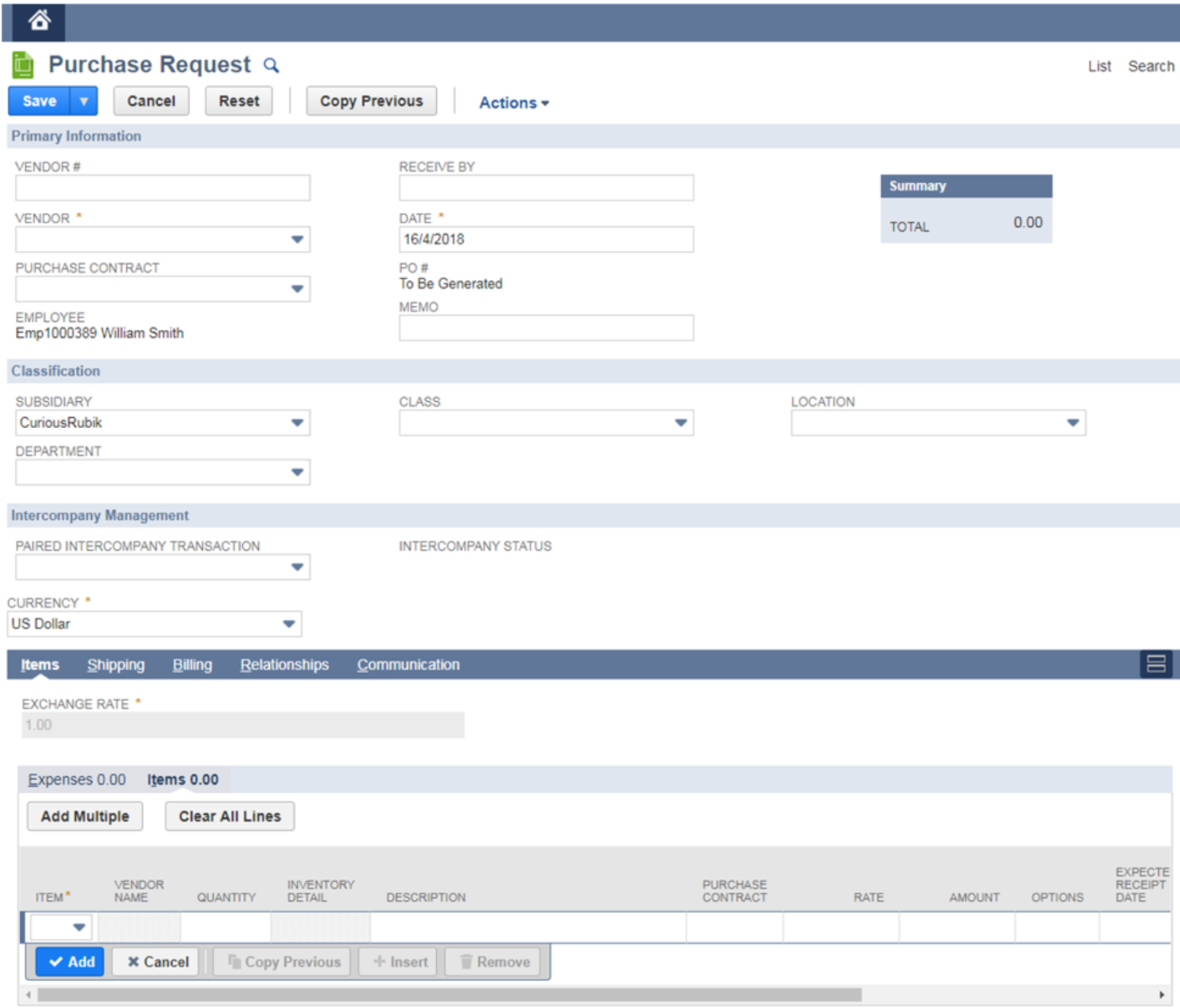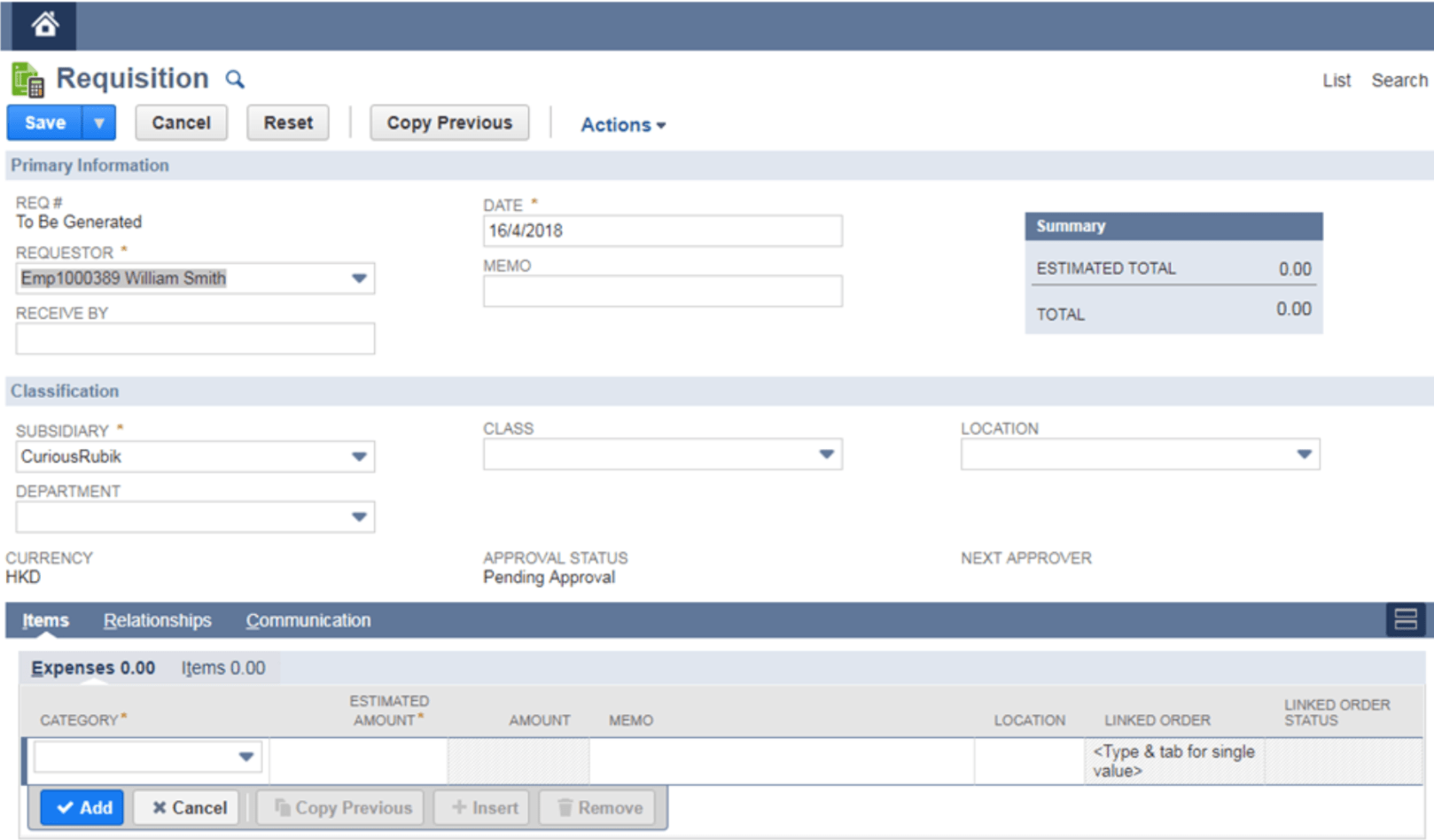Netsuite’s Advanced Procurement module includes features like Requisitions, Blanket Purchase orders, Purchase contracts, and Request for Quote. Let’s have a look at few features from Advanced Procurement in this blog:
Requisitions:
When an employee or company representative, such as a consultant, needs something that should be purchased using company funds, they can use a requisition to initiate the purchasing process. The person requesting the purchase (requestor) specifies which items, services or expenses they need a buyer to purchase. Buyers can then use requisitions to create the purchase orders necessary to fulfill the requisition requests.
A requester can enter a new requisition to initiate a purchase even if they do not know the exact price or vendor name. This information can be added later in the process.
Your procurement workflow might require that a requisition has appropriate approval prior to processing a purchase. Requisitions can be approved using a company hierarchy before a buyer enters a purchase order for requisition items, services or expenses.
After the requisition is completed and approved, the buyer can place orders with vendors for materials on requisitions. A buyer can order requisitions individually or set up automatic purchasing using preferred vendors and pricing.
Requisitions vs. Purchase Requests
A Purchase Request / Requisition is one that is made internally in the organization, listing items that are purchased for the purpose of either obtaining a tender (intimation to purchase department), or for budget approval from the management for items to be purchased.
Note: Purchase Requisitions are included in NetSuite’s Advanced Procurement module while purchase requests are included in the base product.
Requisitions serve a different purpose than purchase requests. Requisitions are simpler for any employee to enter, even with limited information. The table below summarizes the differences between the two.
| REQUISITION | PURCHASE REQUEST | |
| Transaction numbering is distinct from purchase order numbering? | Yes | No |
| Requires vendor for each item/expense? | No | Yes |
| All items/expenses on the form must be for only one vendor? | No | Yes |
| Can consolidate demand from many employees into one purchase? | Yes(many requisitions can generate one purchase order) | No(One purchase request = one purchase order) |
| Employee can enter one requisition with items sourced from multiple vendors? | Yes | No(One purchase request = one vendor) |
| Can it be processed in bulk? | Yes | No |
The following screenshots show the differences between Purchase Request & Purchase Requisition entry screens.
- Purchase Portlet on the Employee Center Dashboard with links to both Requests and Requisitions.


- Purchase Request entry screen.

- Purchase Requisition Entry Screen.

Creation of Purchase Requisition
When logged in under the employee center role, users will need to navigate to the Purchases section of their dashboard. It is easy to confuse Purchase Requisitions for Purchase Requests, so make sure to click on the Purchase Requisition subtab and then click on the Enter Purchase Requisition button which is shown in the screenshot above.
Note: You must have the Employee Center role to access the Employee Center. An administrator can add the Employee Center role to your employee record.
To enter a requisition using the Employee Center:
- Log in to the Employee Center.
- Click Enter Requisition.
Primary Information:
- Select the employee or person who is raising the request in the requestor field
- In the Receive by field select the date you want to receive the order
- Enter the date of requisition
- Select the department, class, location
Items Subtab: Select the Items with estimated rate and quantity
Relationship Subtab: Enter the contact Information
Communication Subtab: Track communications regarding your purchase request under this subtab. When all information on the form is complete, click Save.
Note: If your company uses approval routing, the requisition must go through the approval process before a linked purchase order can be created.
Blanket Purchase Orders
You can improve buyer efficiency and accuracy and potentially reduce procurement spending by using blanket purchase orders. Blanket purchase orders define a pre-determined price for a set quantity of items you will buy from a vendor during a time period.
You can negotiate with your vendor for prices and terms to be applied through a time horizon. This method is more practical than sporadically negotiating with a vendor for each order, and can help ensure that you consistently get the best pricing from the vendor.
Next, you can set up a blanket purchase order to define the specifics of the agreement:
- the item or items to be purchased from the vendor
- the negotiated price for the items
- the quantity of items to be purchased
- the intended delivery schedule that will be required.
After the blanket purchase order is entered, use the blanket purchase order to create or release any new orders for the agreed-upon items. When orders originate from the blanket purchase order, any delivery schedule released by the buyer that falls within the effective dates of the blanket purchase order uses the contracted pricing and terms. The purchase orders associated with the scheduled deliveries can be released at the time the blanket purchase order is created or later, as needed. Future orders can be released either manually as determined by buyers or automatically based on item lead times and features you use, such as Demand Planning or Advanced Inventory Management.
After purchase orders have been created from delivery schedules and released:
- Purchase order lines reference the originating blanket purchase order.
- The blanket purchase order schedule details all associated purchase orders.

